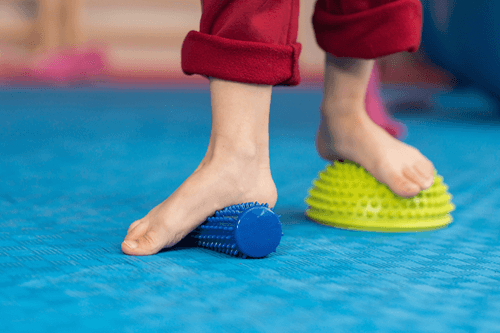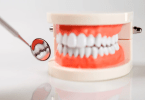
When the foot arch collapses and makes complete or almost full contact with the ground, flat feet, also known as pes planus, develop. This ailment may occur due to an injury or be congenital (present at birth).
A check-up of the foot and imaging testing is often used to diagnose flat feet. OTC painkillers, orthotics, foot exercises, and (in the most serious instances) surgery are all possible forms of treatment. You should be aware that you are not the only one who has flat feet. About 20% to 30% of the world’s population has flat feet to some extent.
Here is all the information you need to know about flat feet if you think you might have this condition:
1. Symptoms
Even while the majority of people with flat feet do not experience any symptoms or just have little discomfort, some frequently report experiencing discomfort in the midfoot area. The swelling around the inner ankle and arch may also be present along with this discomfort, which often gets worse with exercise.
Due to the instability in your gait and posture, which can lead to excessive strain in these joints, hip, knee, and lower back pain can also be common problems. Because arthritis restricts the movement range between the bones in your foot, basic activities like standing on your toes might eventually become intolerable. This may have an impact on your stride when you run or walk.
2. Causes
Severe foot pronation is commonly associated with flat feet. In contrast to normal pronation, overpronation is evident when the arch collapses and the foot contacts the ground. Flat feet are less equipped to absorb impact as they are more likely to overpronate, which puts continual strain on the feet, ankles, and knees. Because the tibia rotates too much as a result of excessive pronation, shin splints are more likely to develop.
The internal foot tilt makes the tendons and ligaments in the legs more stressed. Achilles tendonitis and knee pain are the two side effects of flat feet that occur most frequently. Age-related differences in the causes and treatments for flat feet exist. While flat feet in adults are typically permanent and irreversible, they are normally treatable in children.
One or both arches may collapse as the condition progresses and gets worse with age. This may lead to rigid flat feet over time when the sole remains flat even when the foot is lifted.
3. Diagnosis
Despite the fact that you may sometimes identify flat feet on your own, a foot specialist may still need to look at the underlying problem. It could be necessary to do imaging tests and a visual examination to determine the foot’s structural integrity.
A top podiatrist can determine if you have flat feet by conducting a visual examination. The most popular visual tests are:
- The wet footprint test is carried out with your wet feet positioned flat on the ground. If your foot is flat, the impression between the heel and the ball of your foot will be thicker. The high arch of the foot, on the other hand, would only leave a very little imprint on the outer foot.
- Indications of foot issues may be found during a shoe inspection exam. If you’re flat-footed, the sole will be more worn, particularly towards the heel. Additionally, the shoe’s top will tend to lean toward its sole.
- Another technique to diagnose flat feet is the “too many toes” test. A doctor will stand behind you and count how many fingers on your feet are looking to the sides. While just the pinkie toe will be seen in patients with typical pronation, a doctor will be able to view three or four toes in those who overpronate.
- You may determine if you have flexible or inflexible feet by performing the tiptoe test. You have flexible feet if an obvious arch is apparent when you stand on your toes. If not, your doctor will likely advise a therapy for inflexible flat feet.
If you experience excruciating foot pain, your doctor may prescribe imaging tests to identify the source. The following imaging tests can be warranted:
- X-rays and computed tomography (CT) scans are the most reliable tests for identifying arthritis and determining changes in the angle and/or alignment of the bones in the foot.
- Ultrasound can be performed to provide precise pictures of soft tissue injury, such as a torn tendon.
- Magnetic resonance imaging (MRI) may benefit people with rheumatoid arthritis, tendinitis, or an Achilles heel injury by producing precise pictures of the damaged bone and soft tissues.
4. Treatment options
There are several ways to address flat feet. Surgery is often reserved for severe instances, and a conservative approach is typically preferred in most situations.
Treatment for flat feet is not always necessary. Foot gymnastics and orthotic arch supports, on the other hand, can give some relief to people who have chronic or severe foot pain. Before contemplating surgical procedures, conservative treatments such as nonsteroidal anti-inflammatory drugs (NSAIDs), corticosteroids, and orthotics or bracing should be attempted.
The structure of your foot can be adjusted by using orthotic supports. Layers will be added over a period of a few weeks or months, allowing you to adjust gradually to the orthotic supports with the least amount of pain. You should continue to use arch supports for the rest of your life.
Exercises that increase the flexibility and strength of the arch should also be a component of the therapy. The following approaches are widely recommended by orthopedists and physical therapists:
- Foot gymnastics can help to develop the internal foot muscles. This may entail using your toes to fold objects, scoop up toys, or even draw numbers in the sand with your big toe.
- Stretching while running helps extend the calf muscles and Achilles tendon, which can help prevent the pronation from getting worse during compression.
- The calf muscle and Achilles tendon can be lengthened and strengthened by the yoga position known as downward dog.
- Therapeutic massage techniques, including rolling a ball under the foot, can reduce discomfort while also enhancing the flexibility of the arc.
Surgery for flat feet can relieve discomfort permanently and even provide an arch where one did not previously exist. There are no two surgeries that are the same since every pain might have different origins and localizations. How old you are, your symptoms and the kind of structural deformity you have will all influence the surgical technique.
The are two popular surgical procedures for correcting flat feet. To align the leg appropriately, reconstructive surgery involves moving the tendons and joining certain joints. A subtalar implant is used in other surgery to support the arc. To treat flat feet, a metal implant is put into the back of the foot.
The recovery time after the surgery might be lengthy and costly. Additionally, insurance companies typically hold off on approving the surgery until all other alternatives have been exhausted. Even then, getting clearance might be difficult. In some instances, decisions won’t be made until after an acute injury. Surgery is the only option available to the doctor in this situation.






